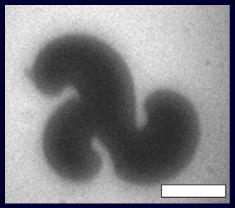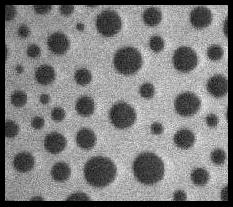Langmuir Film Balance
A langmuir film balance allows you to measure both the molecular area
and surface pressure of surfactants spread at the air-water interface.
This technique gives an experimentalist tremendous control of the
packing environment of the monolayer. The behavior of lipids can be
observed as they are compressed from a non-interacting gaseous phase to
a tightly compressed gel. Below is a picture of a Langmuir trough.
Click the trough to see a simple cartoon of this technique.
Fluorescence
Microscopy
The mixing phase behavior of lipid monolayers and bilayers can also be
studied by including a trace amount of fluorescently tagged lipids into
a multi-component monolayer or bilayer system. Miscible lipids provide
a homogeneous environment for the fluorescently tagged probe to explore
and as a result the image will appear uniformly bright. However, if the
lipid mixture is immiscible the fluorescent probe will unevenly
separate between the two phases. This uneven partitioning of
fluorescent probe produces a contrast which can be observed and
recorded with a CCD camera.

Click on the picture above to
see a movie of a sterol/phospholipid phase transition.

Click on the picture above
to see liquid-liquid coexistence at the air-water interface.


